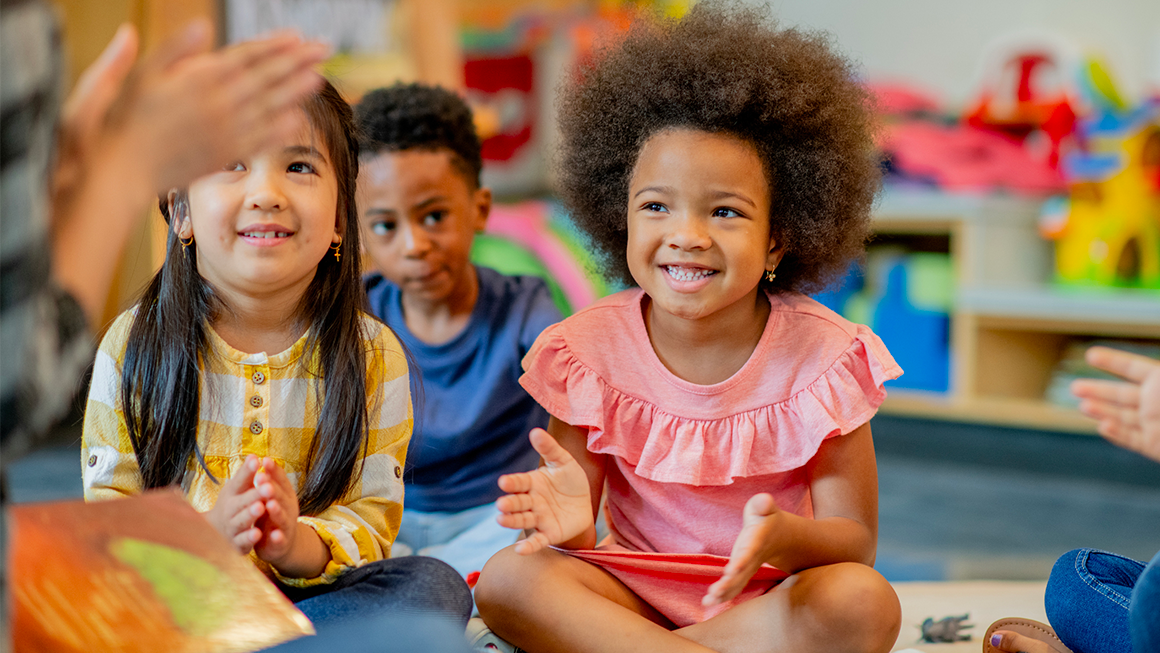
Every year, thousands of families in the District of Columbia participate in the My School DC lottery: a free, universal school-choice system that determines prekindergarten placement for the city’s three- and four-year-olds. For families with young children, the lottery is often the first step into public schooling and offers access to a range of traditional public and public charter pre-K programs.
The program is a rarity nationwide, and DC’s commitment to free, universal public prekindergarten for children at age three (pre-K3) has led to the country’s highest early childhood enrollment rates, with more than 80 percent of three-year-olds participating in public pre-K programs.
However, the number of young children residing in DC has decreased, much like in other cities. This decline may reflect multiple causes: families having fewer children, a trend that predates the COVID-19 pandemic, and midcareer professionals moving out of the city as they take advantage of flexible remote work options to seek affordable, spacious living environments.
From 2018 to 2024, the number of three-year-olds living in DC declined from 8,884 to 7,808. But even with fewer young children in the District, the number of applications to the pre-K3 lottery has remained steady in recent years. According to recently released My School DC lottery data, 4,798 students applied for pre-K3 seats for the 2025–26 school year. Though this number represents a slight dip from the previous year, it aligns closely with the average number of applicants following the pandemic.
Sources: Pre-K3 lottery applications data come from My School DC lottery. DC age 3 population data are from the US Census Bureau’s “Annual Estimates of the Resident Population by Single Year of Age and Sex.”
Several factors may explain steady participation in the DC pre-K3 lottery in the past four years.
- With inflation and rising child care costs, families may prioritize free, high-quality early education. Even middle-income families who would have previously chosen private care may now be turning to the public system.
- The number of available seats has grown by about 800 in the 2025 lottery compared with 2022. With more seats, families have more programs in a wider array of locations to apply to and a better chance of getting into a preferred option. This increase of options likely encourages more families to participate in the lottery.
- Many parents view the pre-K3 lottery as a strategic educational entry point, recognizing that early enrollment can offer a pathway into a preferred DC public school or charter school network in DC’s lottery-based system of school choice.
- My School DC’s robust outreach and engagement efforts may have built knowledge of and comfort with the lottery. These include events like EdFEST—which drew more than 5,000 attendees in 2024 (PDF)—and targeted communications, such as lottery ads on the radio, television, and print, to families across the city. Efforts were also made to help families complete their lottery applications.
Despite these promising trends, participation in the pre-K3 lottery may change in the coming years. The federal government’s return-to-office policies could bring more families back to the District, increasing demand for the already popular program but driving down historically high match rates (PDF) and discouraging potential applicants.
Funding uncertainties may also threaten the size and quality of the pre-K3 program. Funding for the Pre-K Enhancement and Expansion Program—which supports free preschool for 3- and 4-year-olds in community-based settings—was an option to be cut for the 2025–26 school year, which would have increased budgetary pressure on the school system and did raise concerns among families and community-based providers that depend on this support.
Current federal layoffs introduce an additional layer of uncertainty, as some families may leave the city, reducing application pressure. But demand may also rise among families who have lost jobs and need free early learning options. In addition, economic disruptions could constrain the city’s budget by increasing demand for safety net programs and reducing tax revenues. Still, the mayor’s recent commitment to investing in early childhood programs in fiscal year 2026 suggests pre-K3 is part of a broader policy strategy to support families with young children and their employers.
What’s next?
A growing body of evidence has shown the short- and long-term benefits of high-quality early childhood education, including improved academic and social-emotional skills and greater educational stability leading to higher rates of public school persistence and reduced school mobility. These experiences put children on different educational trajectories, including enrollment in more-competitive schools and courses, showing academic benefits into middle school.
As more states and cities consider expanding access to early learning, DC’s experience offers valuable lessons for building application systems that effectively serve a range of families and strengthen educational pipelines from the earliest years.
Let’s build a future where everyone, everywhere has the opportunity and power to thrive
Urban is more determined than ever to partner with changemakers to unlock opportunities that give people across the country a fair shot at reaching their fullest potential. Invest in Urban to power this type of work.